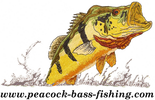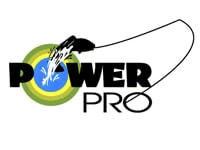|
I'm often asked which fly patterns are best for catching trophy Peacock Bass. In truth, a fly that is the right size and has lifelike movement in the water will get eaten by a few fish. Most of us, however, aren’t content to settle for ‘a few fish’ – especially when we’ve spent good money and traveled a considerable distance to pursue them; we want to show up with the fly patterns that give us the best chance at catching the fish of a lifetime. The guidelines below will help you put together a selection of flies that will greatly increase your fishing success. CHOOSE FLIES THAT ACT LIFELIKE IN THE WATER - AND WILL NOT FOUL EASILY Like many predators, Peacock Bass love flies that look and act natural in the water. Flies that breathe and have a realistic silhouette will attract the most attention. Larger profile flies are great for big Peacock Bass, but can foul easily. A fouled fly will not swim properly and will be refused by larger fish. Nothing is more frustrating than making the perfect cast to a fish only to discover that the fly’s tail is wrapped around the hook. Consider tying or selecting flies with mono guards or materials that shield the hook to prevent them from fouling. FLIES MUST TRACK STRAIGHT – ESPECIALLY AT SPEED Although Peacock Bass will ambush a fly swimming through thick cover, they love to chase flies darting rapidly away from them. They use their wide, powerful tails for explosive bursts of speed to overtake their prey. Often, a single hand retrieve is just not fast enough to get the fish’s attention. Many experienced anglers rely on a two-handed retrieve to generate the speed necessary to elicit a strike from a big peacock. USE FLIES MADE FROM DURABLE MATERIALS The Amazon River is a savage and unforgiving environment filled with a myriad of predators – many of whom have razor-sharp teeth. Piranha, Bicuda, Traira, and Payara are attracted to the same flies as Peacock Bass and will cut your 6-inch fly in half with a single bite! While natural materials like feathers and bucktail look great in the water, they just don’t hold up to toothy predators. Patterns that incorporate synthetic material like DNA, Flashabou and Steve Farrar’s Flash Blend impart plenty of action while providing increased durability. Heads finished with epoxy or UV cure adhesives will also increase the life of your fly. EYES ARE A NECESSITY
Make sure your fly patterns have large, visible eyes. Peacock Bass and other predators key in on the eyes of their prey to subdue them more quickly. As a result of this behavior, many prey species in the Amazon have developed ocelli or ‘eye spots’ on their tails to confuse predators and direct attention toward less vital parts of their anatomy. Whether you tie your own flies or pick them up at your local fly shop, following these guidelines will enable you to select the fly patterns which will offer you the best chance at making your next Peacock Bass trip a great success.
1 Comment
|
Categories
All
AuthorJim Kern has a long history in the Peacock Bass world. Jim has fished in Brazil 32 times since 1997 with both fly and conventional tackle. Jim developed and ran the American office for Captain Peacock from 2010 thru 2013 was the Vice President and General Manager of Amazon Tours from 1998 thru 2003. Through Emu Outfitting, his outfitting company of 30 years, he managed Alaska’s Rainbow Bay Resort from 2007-2009 & Alaska’s Angry Eagle Lodge 2013 & 2014. Jim holds a Coast Guard Captains license, has been a registered fishing guide in Alaska, Montana and Idaho and has been a fly tier for 40 years. Jim also was a 3 time American League All Star baseball pitcher in 1977, 78, and 79 & the American League Relief Pitcher of the year in 1979. Archives
October 2018
|
Let's Talk Peacocks 817.455.5374
Location |
|






 RSS Feed
RSS Feed






